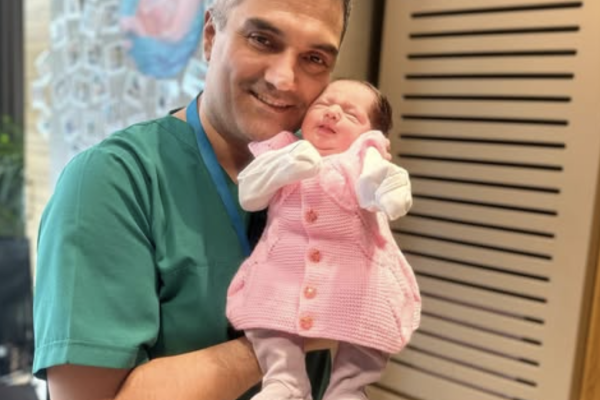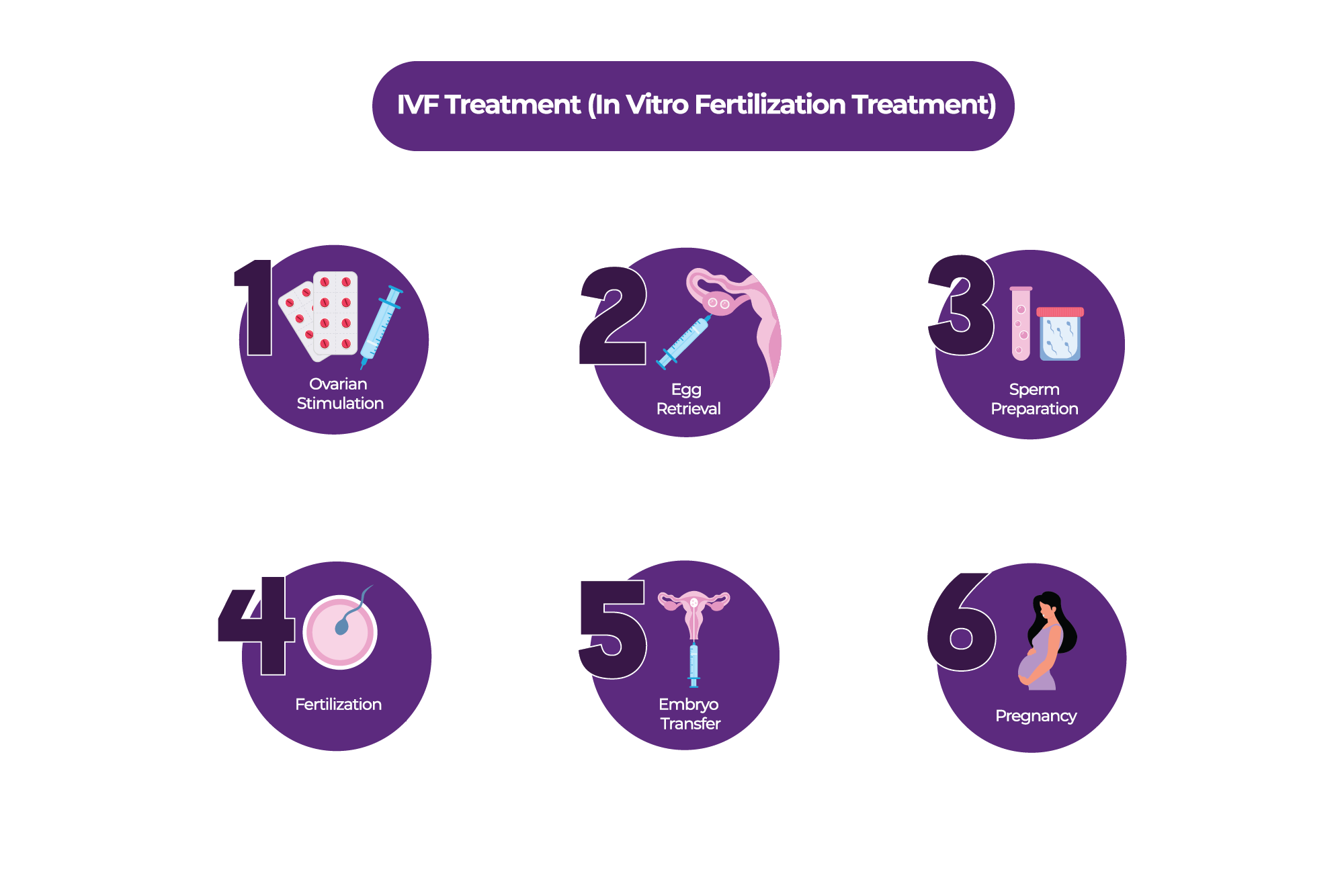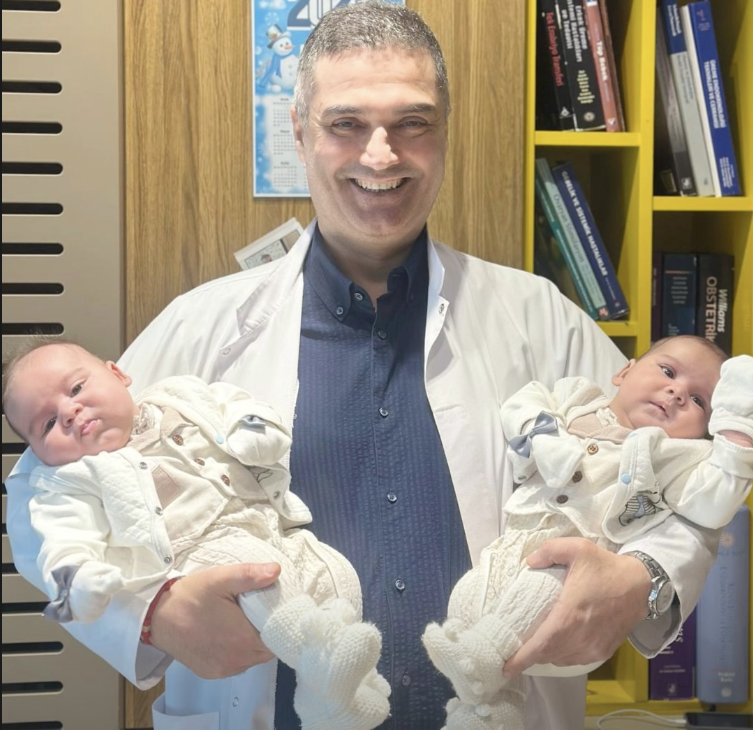- Fikriye Gedikoglu
- 0 Comments
Today, many couples are unable to have children naturally, but thanks to advances in medicine, the chance of having a baby is increased with reproductive treatments. In Vitro Fertilization (IVF) is one of the most widely used assisted reproductive techniques and has helped millions of babies come into the world around the world. So, what is in vitro fertilization? Who is it suitable for? How does the process work and what are the success rates? Here are all the details you are curious about…
What is In Vitro Fertilization (IVF)?
IVF is an assisted reproduction method that involves fertilizing a woman’s eggs with male sperm in a laboratory environment and transferring the resulting embryos to the uterus. Developed for couples who cannot conceive naturally, this method offers a solution to infertility problems caused by reasons such as ovulation problems, blocked tubes, and low sperm quality in men.
The first IVF treatment was performed in 1978 and since then, success rates have increased with the advancement of medical technology. In addition, Louise Brown, the first baby born with IVF treatment in the world, had a child naturally. Today, especially thanks to advanced laboratory techniques and personalized treatment approaches, the possibility of having a baby with IVF has increased significantly.


Who is Suitable for IVF?
IVF treatment can be an option for couples who are unable to have children for various reasons. The main situations in which IVF is preferred are:
1. Female Factor Infertility
- Ovulation problems: In vitro fertilization treatment can be used in women who have irregular menstrual cycles, irregular ovulation, or no ovulation at all.
- Damaged or blocked fallopian tubes: If the fallopian tubes are blocked, the sperm and egg cannot meet naturally, so the in vitro fertilization method comes into play.
- Endometriosis (chocolate cyst disease): IVF may be recommended for women who are experiencing infertility due to the growth of the endometrium outside the uterus.
- Myoma: These are non-cancerous tumors that can prevent a fertilized egg or embryo (baby) from reaching the uterus.
- Having had an operation that could prevent pregnancy: After bilateral tubal ligation (tying of the tubes), reverse tubal ligation (reopening) can be an alternative for women who cannot or do not want to have surgery.
2. Male Factor Infertility
- Low sperm count or quality: In cases where sperm motility is low or there are deformities, in vitro fertilization treatment with microinjection (ICSI) can be applied.
- Azoospermia (absence of sperm): In vitro fertilization can be performed by surgically removing sperm from the man.
- Men with sexual intercourse problems: IVF can be performed on men who have anatomical, physiological or psychological problems.
- Men with cancer: Men who will undergo surgery, chemotherapy and radiotherapy (radiation treatments), etc., can have sperm freezing before these treatments, giving them the chance to have children through in vitro fertilization after recovery.
3. Unexplained Infertility
In some couples, no cause of infertility can be found as a result of the tests performed. This situation is called unexplained infertility and in vitro fertilization can be an effective solution for these couples.
4. Genetic Disease Carrier
If there is a genetic disease risk in the mother or father candidate, the embryos can be genetically tested and healthy ones can be selected. This method is performed with Preimplantation Genetic Diagnosis (PGD) during in vitro fertilization treatment. Here are some genetic diseases that can be screened with PGD:
- Single Gene Disorders (PGT-M)
Cystic Fibrosis, Sickle Cell Anemia, Thalassemia (Mediterranean Anemia), Huntington’s Disease, Spinal Muscular Atrophy (SMA), Fragile X Syndrome, Duchenne Muscular Dystrophy, Hemophilia (A and B), Tay-Sachs Disease, Marfan Syndrome
- Chromosomal Abnormalities (PGT-A)
Down Syndrome (Trisomy 21), Edwards Syndrome (Trisomy 18), Patau Syndrome (Trisomy 13), Turner Syndrome (Monosomy X), Klinefelter Syndrome (XXY), Other chromosomal disorders (translocations, deletions, etc.)
- Other Genetic Conditions
However, not every genetic disease can be screened with PGT, so it is important to receive genetic counseling.
5. Recurrent Miscarriages and Failed Pregnancies
After recurrent miscarriages or unsuccessful pregnancy attempts with other fertility treatments, in vitro fertilization may be a solution.
6. Oocyte (egg) freezing due to social indication
Nowadays, women can postpone wanting to have children due to career reasons. Egg freezing can be done with in vitro fertilization for single women. The earlier the freezing, the higher the success rate.
7. Risk of Early Menopause
Today, premature ovarian failure can be diagnosed earlier. Egg freezing can be performed in women at risk of early menopause (before the age of 40), while embryo freezing is preferred in couples.
IVF Treatment Process

IVF treatment is a detailed process consisting of several stages. Each stage of the treatment is personalized according to the couple’s individual health condition and needs. Here is the step-by-step process of IVF:
1. Initial Inspection and Evaluation
The general health status of the couple is evaluated, necessary tests are performed and an appropriate treatment plan is created. Hormone tests, ovarian reserve assessment, ultrasound and hysterosalpingography (HSG) are performed for women; sperm analysis is performed for men.
2. Stimulation of the Ovaries (Ovarian Stimulation)
The woman’s ovaries are stimulated in a controlled manner with hormone injections, causing her to produce multiple eggs. This process takes approximately 10-14 days and is monitored regularly with ultrasounds.
3. Egg Collection (OPU – Oocyte Pick-Up)
When the eggs reach a certain maturity, they are collected under light sedation with vaginal ultrasound guidance. This procedure usually takes 10-15 minutes and the patient is discharged after a few hours.
4. Fertilization in a Laboratory Environment
The collected eggs are fertilized in a laboratory environment with sperm taken from the man. Fertilization is achieved by classical IVF or microinjection (ICSI) method.
5. Embryo Development and Selection
The fertilized eggs are monitored for 3-5 days. High-quality embryos are selected and prepared for transfer to the uterus.
6. Embryo Transfer
The healthiest of the developing embryos is transferred to the uterus. The transfer process is painless and takes 10-15 minutes.
7. Pregnancy Test
A pregnancy test is performed on the blood approximately 10-12 days after the embryo transfer. If the test result is positive, pregnancy follow-up is started.
IVF Success Rates
Success rates of IVF treatment depend on many factors. Age, egg and sperm quality, embryo health and intrauterine environment play a major role.
- If the woman is under 30 years old, the success rate is around 50-60%.
- Around the age of 35, the success rate varies between 40-50%.
- After age 40, the success rate may drop below 20%.
These rates may vary depending on the couple’s specific health condition and the treatment method chosen.
Things to Consider in IVF Treatment
-
- Eating healthy and maintaining ideal weight
- Quitting smoking and alcohol consumption
- Staying away from stress and getting psychological support
- Taking medications recommended by your doctor regularly
- Spouses doing light sports together, such as walking
- IVF treatment is a process that requires patience and not every attempt will necessarily result in success. However, with the right doctor and appropriate treatment, most couples can achieve a healthy pregnancy.
Conclusion
IVF is one of the most effective assisted reproductive techniques for couples who want to have children today. Your doctor offers couples a healthy IVF process and pregnancy follow-up with personalized treatment plans and the most up-to-date methods.
For couples who want to have children, the best step is to consult a specialist doctor to get more information about in vitro fertilization and to have a personal evaluation.


